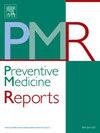美国电子烟市场中尼古丁声称的比例
IF 2.4
3区 医学
Q2 PUBLIC, ENVIRONMENTAL & OCCUPATIONAL HEALTH
引用次数: 0
摘要
尼古丁浓度、形式(盐与游离碱)和类型(合成与烟草衍生)是制造商操纵的电子烟的关键特征。诸如“无烟草”之类的营销声明可能会吸引新的消费者并增加产品的使用意图。本研究旨在监测电子烟的尼古丁声明,并评估其在美国的市场比例。方法:我们使用来自美国实体店的尼尔森扫描跟踪数据分析电子烟销售和尼古丁营销声明。市场比例计算为2023年12月24日至2024年1月20日期间,每个尼古丁声称类别的单位销量与电子烟总单位销量的比例。结果尼古丁声明分为6类,市场占比分别为:尼古丁(77%)、烟碱盐(10.1%)、合成尼古丁(2.2%)、无烟草或无烟草(2.2%)、无尼古丁或无尼古丁(0.03%)和无烟草声明(8.7%)。各品类尼古丁浓度的市场占比(括号内市场占比)分别为0 %(0.04%)、0.1 ~小于2%(2.9%)、2 ~小于5%(16.2%)、5%及以上(73.0%)和未指明(7.9%)。结论明确使用尼古丁盐、合成尼古丁或无烟声明的产品市场比例显著。高尼古丁浓度(5%或更高)的产品在市场上占据主导地位,突显其持续受欢迎。本文章由计算机程序翻译,如有差异,请以英文原文为准。
E-cigarette market proportion by nicotine claims in the United States
Objective
Nicotine concentration, form (salt vs. freebase), and type (synthetic vs. tobacco-derived) are key characteristics of e-cigarettes that manufacturers manipulate. Marketing claims such as “tobacco-free” may attract new consumers and increase product use intentions. This study aimed to monitor the nicotine claims of e-cigarettes and assess their market proportions in the U.S.
Methods
We analyzed e-cigarette sales and nicotine marketing claims using Nielsen ScanTrack data from U.S. brick-and-mortar stores. Market proportion was calculated as the ratio of unit sales of each nicotine claim category to the total unit sales of e-cigarettes between 12/24/2023 and 1/20/2024.
Results
Nicotine claims were categorized into six groups, with the following market proportion: nicotine (77 %), nicotine salt (10.1 %), synthetic nicotine (2.2 %), zero tobacco or tobacco-free (2.2 %), zero nicotine or nicotine-free (0.03 %), and no claim (8.7 %). The market proportion of each category of nicotine concentration was as follows (market proportion in parentheses): 0 % (0.04 %), 0.1 to less than 2 % (2.9 %), 2 to less than 5 % (16.2 %), 5 % or higher (73.0 %), and unspecified (7.9 %).
Conclusions
The market proportion of products that explicitly used nicotine salt, synthetic nicotine, or tobacco-free claims was notable. Products with high nicotine concentration (5 % or higher) dominated the market, highlighting their continued popularity.
求助全文
通过发布文献求助,成功后即可免费获取论文全文。
去求助
来源期刊

Preventive Medicine Reports
Medicine-Public Health, Environmental and Occupational Health
CiteScore
3.90
自引率
0.00%
发文量
353
 求助内容:
求助内容: 应助结果提醒方式:
应助结果提醒方式:


